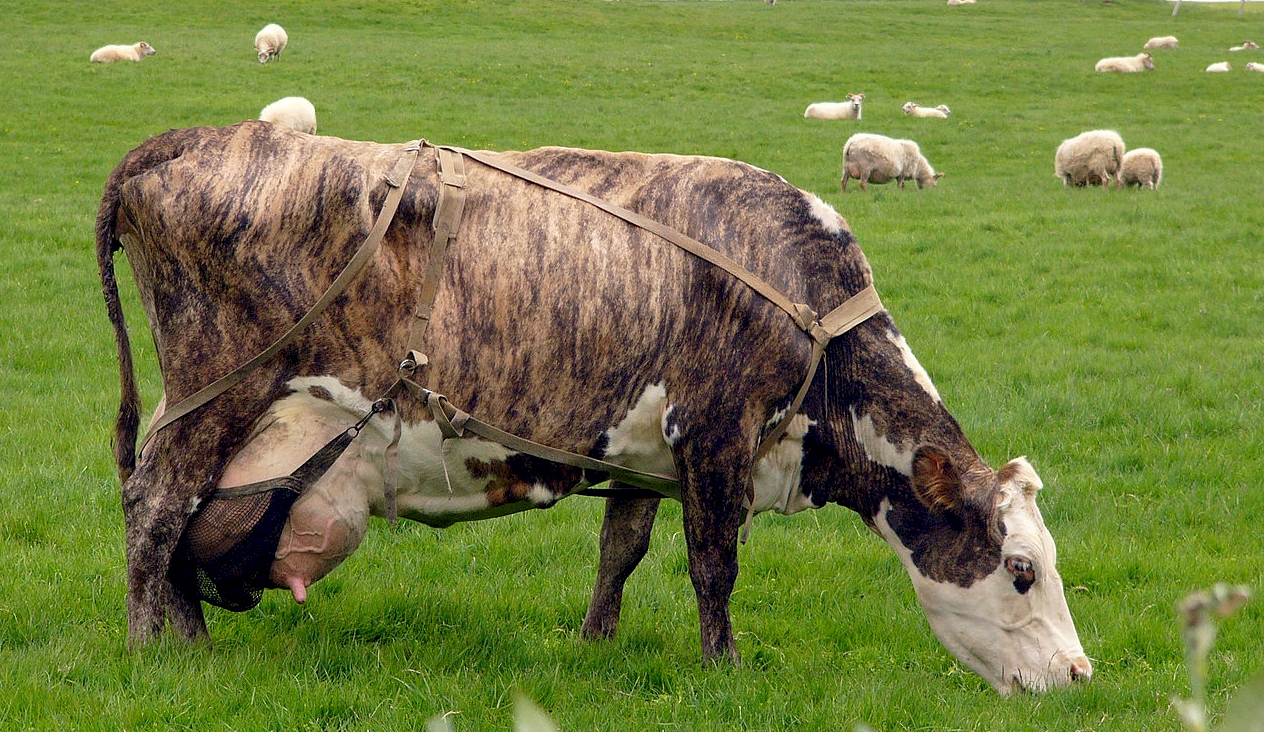Icelandic cattle (Icelandic: íslenskur nautgripur ) are a breed of small dairy cattle native to Iceland. Cattle were first brought to the island during the Settlement of Iceland a thousand years ago. Icelandic cattle are an especially colorful breed with a wide variety of colors and markings. Icelandic cattle have been genetically isolated for centuries; cattle are not permitted to be imported into Iceland, so they have been protected by strict disease-prevention measures. However, Icelandic cattle are most closely related to Blacksided Troender- and Nordland Cattle from Norway.
95% of Idelandic cattle are naturally polled, but the rest are horned. An average cow can produce about 6,000 kg (13,200 lb) of milk per year, with the best animals producing 11,000 kg (24,300 lb). They are housed for about eight months of the year and fed largely on hay, supplemented with cereals. They are grazed outside in the summer, and to prolong the growing season, cabbage, turnips, barley, and oats are grown for forage. Fewer than 30,000 cattle are on the island and their milk is used to create a mild, butter-flavored cheese.
According to a report produced by the Agricultural University of Iceland, it would be more cost-effective to replace Icelandic cattle with Swedish cattle, as the latter produce more milk at a lower cost. However, some have argued that Icelandic cattle are part of Iceland's cultural heritage and should not be replaced.
The milk from Icelandic cows is used to make skyr. Skyr is a cultured dairy product. has the consistency of strained yogurt, but a milder flavor. Skyr can be classified as a fresh-sour-milk cheese, similar to curd cheese but consumed like a yogurt. It has a slightly sour dairy flavor, with a hint of residual sweetness. It is traditionally served cold, either plain or with cream. Commercial manufacturers of skyr have added flavors such as vanilla, coffee, or fruit.
Content and Photo Source: Wikipedia.Org

